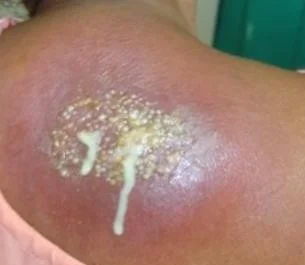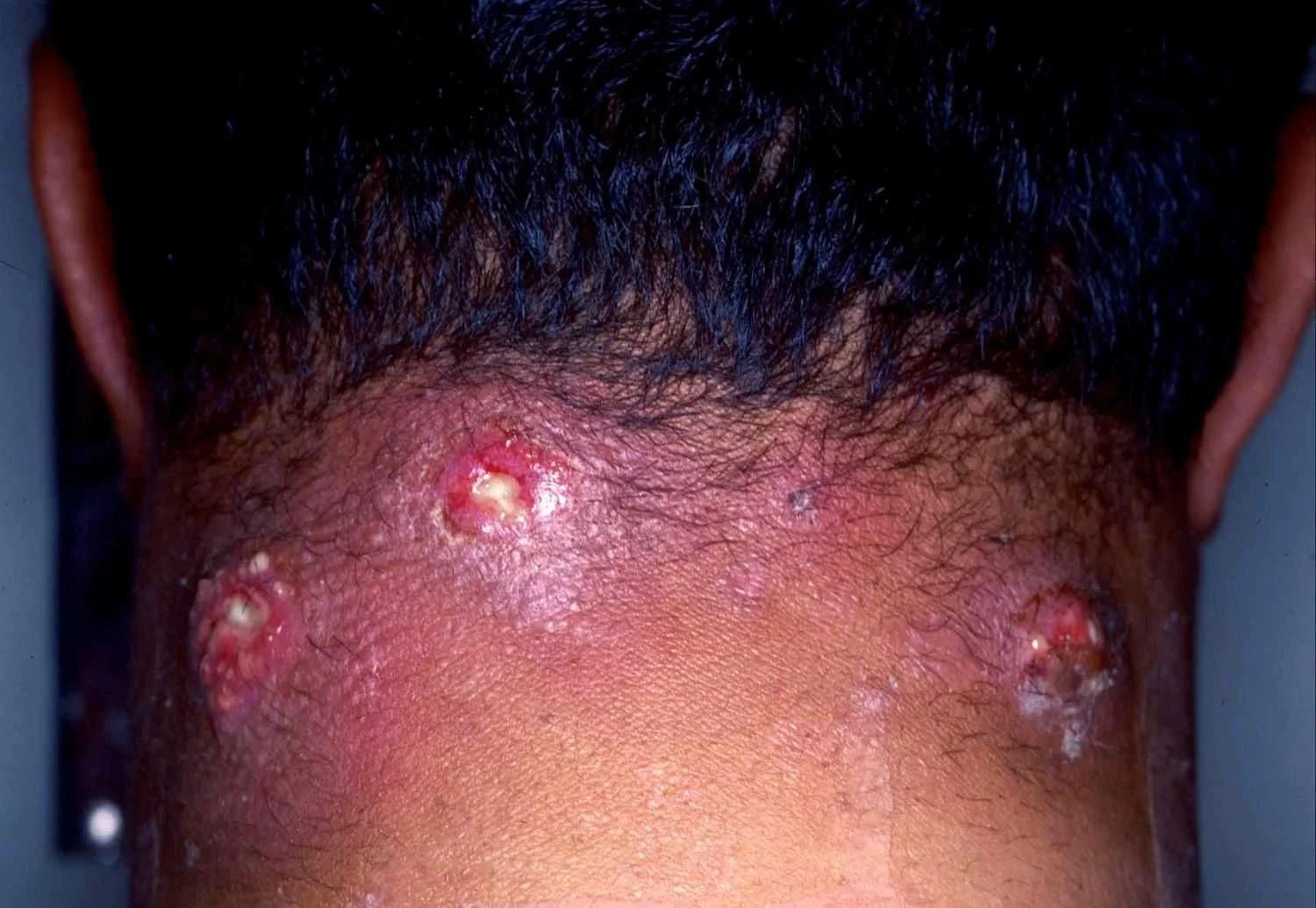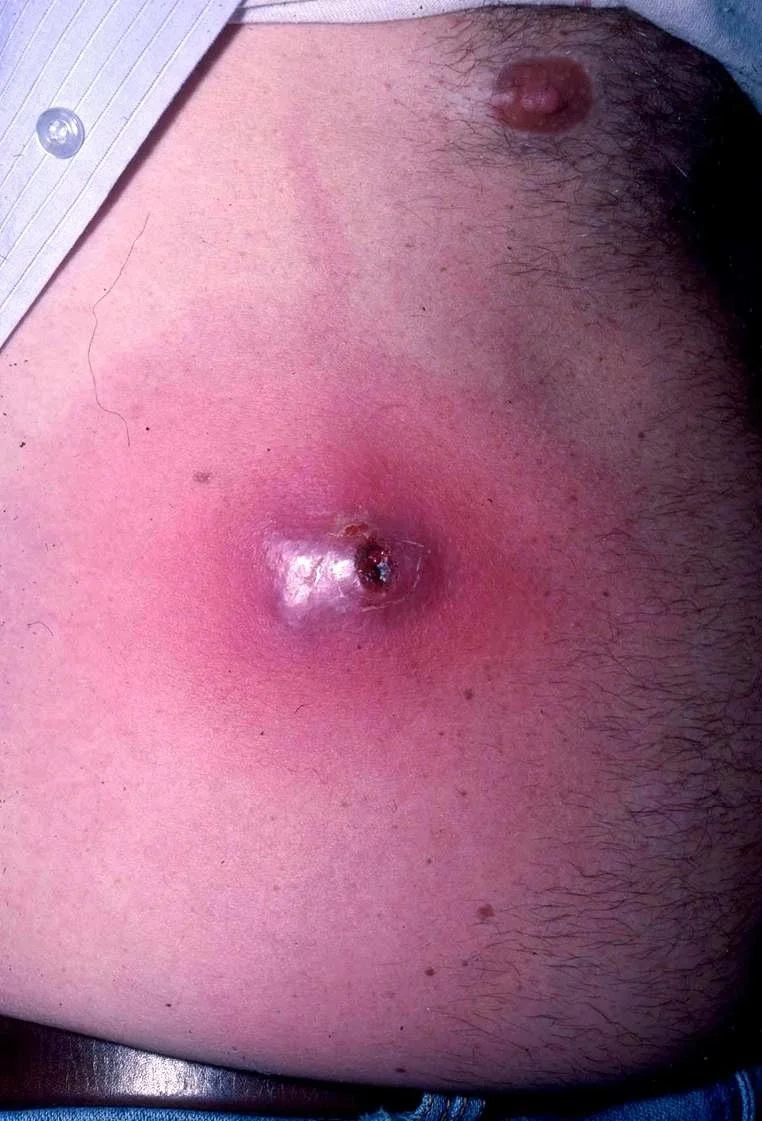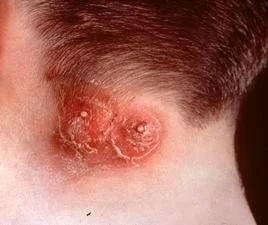Surgery
Carbuncle:
Its a large extension of furuncle. *Superficial infective gangrene involving the subcutaneous tissue. *
Causative Org: Staphylococcus aureus. Common in diabetics.
Site: - Axilla in female and nape of the neck in male are the commonest sites,
- other sites are back and the shoulder region.
- Overlying Skin is coarse and has poor vascularity.
Clinical Features: The skin over the area is red and dusky, multiple vesicles appear on it, which burst on the surface, one after another bringing out a purulent discharge. Thus, the surface looks sieve – like.
- There is Pain, stiffness and induration over the skin and subcutaneous tissues.
Treatment:
-
Treat diabetes if present.
-
Antibiotics—Appropriate parenteral antibiotics as Augmentin, Doxycycline or Fluxacillin are given.
-
Hot compresses & Mag-sulph is applied to reduce the edema.
-
Operation is to be undertaken when the carbuncle has softened or if there is severe pain, toxaemia and big size.
A cruciate incision is made and liberally extended to the margins. All sloughs are removed with gauze swabs or scissors. The apices of the four skin flaps are cut, making the opening circular and large. Postoperatively, antibiotics are continued.


Dermatology
Carbuncle
- A group of adjacent hair follicles becomes deeply infected with Staphylococcus aureus, leading to a swollen painful suppurating area discharging pus from several points.
- larger than a Furuncle (Boil).
- The pain and systemic symptoms are greater than those of a boil.
- Diabetes should be excluded.
Carbuncle Presentation


Treatment
- Incision and drainage.
- Needs both topical and systemic antibiotics.
Carbunculosis
- A carbuncle is a coalescence of several inflamed follicles into a single inflammatory mass with purulent drainage from multiple follicles

Relationship and Management (Furuncle and Carbuncle)
- Furuncles and carbuncles are a subtype of abscesses, which preferentially occur in skin areas containing hair follicles exposed to friction and perspiration
- Common areas include the back of the neck, face, axillae, and buttocks
- Usually caused by Staphylococcus aureus
- Patients are commonly treated with oral antibiotics
- For a solitary small furuncle: warm compresses to promote drainage may be sufficient
- For larger furuncles and carbuncles: manage as you would an abscess
Examples

